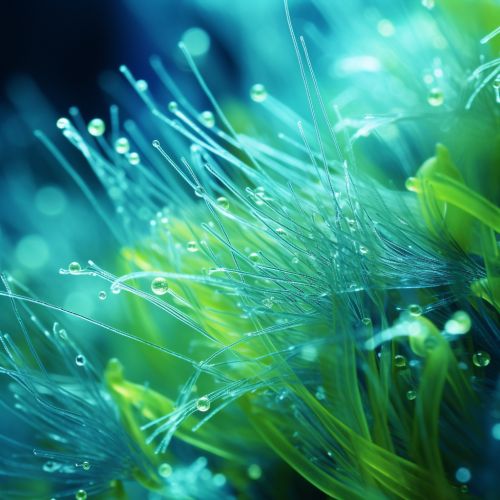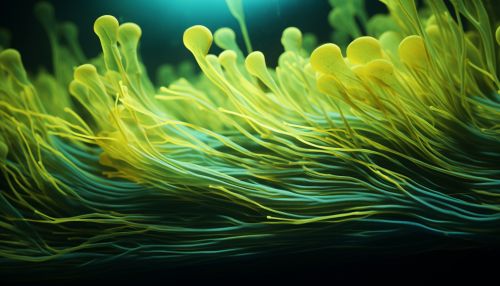Photosynthetic bacteria
Overview
Photosynthetic bacteria are a group of bacteria that possess the ability to perform photosynthesis, a process that converts light energy, usually from the sun, into chemical energy in the form of glucose or other sugars. These bacteria play a crucial role in the carbon cycle, helping to maintain the balance of carbon dioxide and oxygen in the atmosphere.


Classification
Photosynthetic bacteria are classified into several groups based on their pigments and the nature of their photosynthetic process. These include Cyanobacteria, Purple bacteria, Green sulfur bacteria, and Green non-sulfur bacteria. Each of these groups possesses unique characteristics that distinguish them from each other and from other types of bacteria.
Cyanobacteria
Cyanobacteria, also known as blue-green algae, are the only group of photosynthetic bacteria that produce oxygen as a byproduct of photosynthesis. They contain a blue pigment called phycocyanin and a green pigment called chlorophyll a, which are used in the photosynthetic process.
Purple Bacteria
Purple bacteria are a group of photosynthetic bacteria that contain a purple pigment called bacteriochlorophyll. They perform a type of photosynthesis known as anoxygenic photosynthesis, which does not produce oxygen.
Green Sulfur Bacteria
Green sulfur bacteria are photosynthetic bacteria that use hydrogen sulfide (H2S) as an electron donor in the photosynthetic process. They contain a green pigment called chlorobium chlorophyll.
Green Non-Sulfur Bacteria
Green non-sulfur bacteria are a group of photosynthetic bacteria that do not use hydrogen sulfide in their photosynthetic process. They contain bacteriochlorophyll and perform anoxygenic photosynthesis.
Photosynthetic Process
Photosynthetic bacteria perform photosynthesis in a similar manner to plants, but with some key differences. The process involves the absorption of light energy by pigments, which is then used to convert carbon dioxide and water into glucose and oxygen. The exact process varies depending on the type of bacteria and the nature of their photosynthetic pigments.


Ecological Role
Photosynthetic bacteria play a critical role in the Earth's ecosystem. They contribute to the carbon cycle by converting carbon dioxide into organic matter through photosynthesis. They also play a role in the nitrogen cycle, with some types of photosynthetic bacteria capable of nitrogen fixation, a process that converts atmospheric nitrogen into a form that plants can use.
Industrial Applications
Photosynthetic bacteria have a variety of industrial applications. They are used in the production of biofuels, in waste treatment processes, and in the production of bioplastics. They are also being explored for their potential in carbon capture and storage, a process that could help mitigate the effects of climate change.
